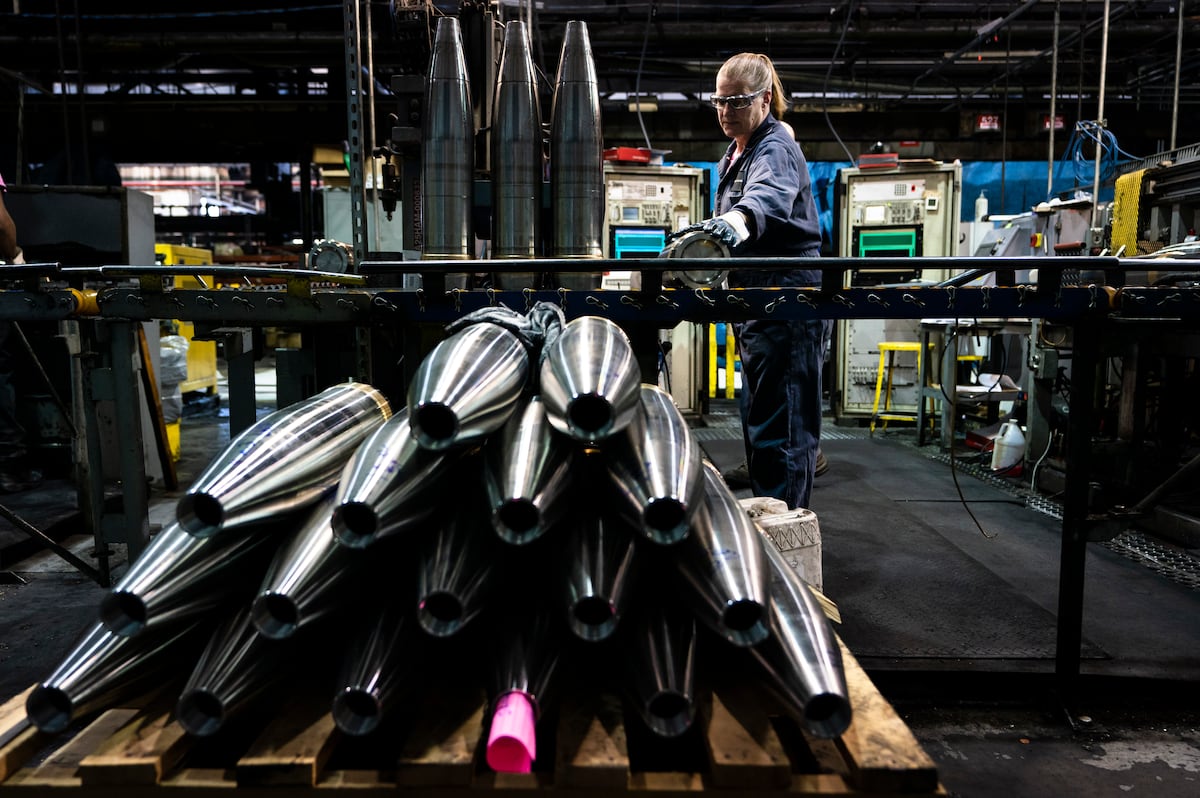

THE HAGUE, Netherlands — European military industrial production in support of Ukraine has overtaken American output for the first time since Russia’s invasion, new numbers released Tuesday show.
According to the tally by the German Kiel Institute for the World Economy, Europe allocated at least €35.1 billion ($41.1 billion) in military industrial output to Ukraine between the start of the war in February 2022 and the end of June 2025. This is €4.4 billion ($5.15 billion) more than the U.S. committed in the same period.
The continent also overtook the U.S. in terms of total military aid in the spring, following a sharp rise in European support for Ukraine in response to America’s withdrawal under the nascent Trump administration. EU countries have allocated over $65 billion in military assistance to Ukraine, according to the Union’s own tally. Additionally, several non-EU European countries are major donors, bringing up the European total.
The numbers do not include the recently announced American weapons deliveries, which are the first large batch approved by President Donald Trump’s administration, because they will be purchased by Kyiv, rather than donated.
The disparity is even greater when accounting for other forms of aid, too. Europe has allocated €167.4 billion ($196.1 billion) in government aid to Kyiv and pledged another €90 billion ($105.4 billion), according to the Kiel Institute’s tracker. The U.S. has allocated and pledged €114.6 billion ($134.3 billion) and €4.35 billion ($5.1 billion), respectively.
Although Europe’s combined clout has consolidated to buttress Ukraine, the U.S. nonetheless remains the single largest donor. Its combined total is nearly twice that of the second-largest donor, the European Union, which has provided €60.5 billion ($70.9 billion) in financial aid and €2.7 billion ($3.2 billion) in humanitarian assistance.
The U.S. has also provided to Ukraine more infantry fighting vehicles and howitzers than any other single country, as well as multiple launch rocket systems and air defense systems. However, European tallies combined surpass the U.S. in all of these categories.
The No. 1 European donor country is Germany, although as a portion of their gross domestic product, Denmark, Estonia, Lithuania and Latvia lead the pack. Denmark’s aid to Ukraine amounts to 2.9% of the country’s GDP, plus a further 0.4% if EU-provided assistance is considered in the tally.
Poland has also been a significant supporter, including coming out as the No. 1 tank provider for Ukraine, having sent Kyiv a total of 354 tanks. The Netherlands has provided 104 and Denmark 94.
Kiel Institute researchers noted that many of the weapons now going to Ukraine come straight from the military-industrial output of the sending countries, rather than from preexisting stockpiles, as had been the case in the earlier days of the war.
Early on, stockpiles of weapons and gear had run low across many Western countries as the systems were rushed to the frontlines in Ukraine in defense against the Russian invasion.
Unlike unpredictable American assistance, European support has remained consistent — and even expanded — as fighting in Ukraine dragged on into its fourth year.
In May and June 2025 alone, European governments allocated €10.5 billion ($12.3 billion) in new military assistance, of which at least €4.6 billion ($5.4 billion) is being routed through procurement contracts, rather than pulled from existing stockpiles, underscoring the growing centrality of industrial output over surplus arsenals.
Linus Höller is Defense News' Europe correspondent and OSINT investigator. He reports on the arms deals, sanctions, and geopolitics shaping Europe and the world. He holds a master’s degrees in WMD nonproliferation, terrorism studies, and international relations, and works in four languages: English, German, Russian, and Spanish.








-3.png)



